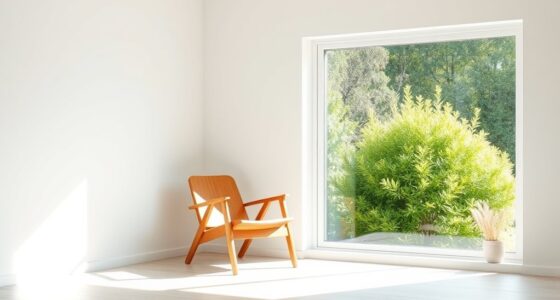Everyday actions can make a real difference in conserving water, and it’s easier than you might think to adopt a more sustainable lifestyle. Simple steps like fixing leaks or turning off taps can add up over time, saving gallons of water without much effort. But there are even more effective strategies that can help you reduce your water footprint further. Curious about the most practical ways to live more water-wise?
Fix Leaks Promptly
Leaking faucets and running toilets can waste a significant amount of water if left unaddressed. A small drip from a faucet or a silent leak in your toilet tank might seem minor, but over time, it adds up. Fixing leaks promptly saves water and lowers your utility bills. Additionally, addressing leaks quickly can prevent further damage to your plumbing and home infrastructure by reducing water waste.
Start by inspecting your faucets and toilets regularly for signs of leaks. If you notice drips or continuous running, repair them immediately—most leaks are easy to fix with basic tools or by replacing worn-out parts.
Don’t ignore small leaks; they can become bigger problems later. Taking quick action not only conserves water but also prevents potential water damage and costly repairs.
Stay vigilant and address leaks as soon as you notice them to make a real difference in water conservation.
Turn Off Taps When Not in Use
Turning off taps when you’re not using them is one of the simplest ways to save water daily. Whether you’re brushing your teeth, washing your hands, or doing dishes, turning off the tap saves hundreds of gallons each year. It’s easy to forget, but developing the habit of shutting off the water flow can make a big difference. Small actions like these compound over time, reducing water waste and lowering your utility bills. Being mindful about tap use is a quick, effective step toward a more water-wise lifestyle. Additionally, proper plumbing maintenance can prevent leaks that waste significant amounts of water over time.
Use Water-Efficient Fixtures
Installing water-efficient fixtures, such as low-flow showerheads and dual-flush toilets, can significantly reduce your household water use. These fixtures are designed to deliver the same performance while using less water, helping you save both water and money on utility bills. Incorporating digital literacy programs can also promote awareness about sustainable habits and the importance of water conservation. When you take a shower, a low-flow showerhead limits water flow without sacrificing comfort, reducing waste during daily routines. Dual-flush toilets allow you to choose a lower water volume for liquid waste and a higher volume for solids, optimizing water use based on need. Upgrading your fixtures is a simple, effective step toward a more sustainable lifestyle. Plus, these fixtures are widely available and easy to install, making it accessible for anyone looking to make a positive environmental impact.
Collect Rainwater for Outdoor Use
Collecting rainwater for outdoor use is an effective way to reduce your reliance on municipal water supplies and lower your water bills. You can set up a simple rain barrel system beneath your downspouts to capture runoff from your roof.
Make sure to cover the barrels with a lid to prevent debris, mosquitoes, and pests from getting in. Use the collected water to irrigate your garden, wash outdoor tools, or clean your car.
Rainwater is naturally soft and free of chemicals like chlorine, making it a healthier choice for plants. Regularly clean your barrels to prevent algae growth and ensure water quality.
Water Plants Wisely
To make the most of your water resources, it’s important to water your plants wisely by focusing on efficiency and timing. Water early in the morning or late in the evening to reduce evaporation and ensure your plants absorb the maximum moisture. Using a drip irrigation system can further enhance water efficiency by delivering water directly to the roots. Use a hose with a nozzle or drip irrigation system to target roots directly, avoiding water waste. Group plants with similar watering needs to prevent over- or under-watering. Check soil moisture regularly; only water when it’s dry a few inches below the surface. Mulching around plants helps retain moisture and keeps roots cool.
Only Run Dishwashers and Washing Machines Full
Running your dishwasher and washing machine only when they’re full can significantly cut down on water waste. By waiting until you have a full load, you maximize each cycle’s efficiency and avoid unnecessary water use.
For dishes, scrape off food scraps but don’t pre-rinse excessively, and run the dishwasher only when it’s full. Similarly, for laundry, gather your clothes throughout the week and wash full loads. Use eco or water-saving modes if available; they consume less water and energy.
Avoid partial loads, which waste resources and increase your overall water footprint. This simple habit reduces unnecessary water consumption, saves you money on utility bills, and helps conserve a precious resource.
Making it a routine ensures you’re doing your part in water-wise living.
Opt for Shorter Showers
Reducing the length of your showers can make a noticeable difference in water conservation. Every minute you cut from your shower time saves gallons of water. Try setting a timer or using a showerhead with a built-in timer to keep yourself on track.
Shortening your showers from 10 minutes to 5 can save hundreds of gallons each month. Additionally, turning off the water while lathering or shampooing helps prevent unnecessary waste.
Use a low-flow showerhead to maintain good water pressure while using less water overall. Making these small adjustments doesn’t just conserve water; it also reduces your energy bill since less hot water is used.
Implementing water-saving techniques can maximize your conservation efforts and make a bigger impact. It’s a simple change that benefits both your wallet and the environment.
Choose Drought-Resistant Landscaping
Choosing drought-resistant landscaping can significantly cut your water use while keeping your yard attractive. Opt for native plants and xeriscape designs that thrive in your climate with minimal watering. These plants are adapted to dry conditions, so they require less irrigation and are more resistant to droughts. Incorporating natural materials like stone and mulch can further reduce water loss and enhance the rustic aesthetic. Infiltrate your landscape with rustic charm by using materials that complement the drought-tolerant plants and create a cohesive, eco-friendly outdoor space. Use efficient irrigation systems like drip emitters to deliver water directly to plant roots, avoiding waste. Avoid lush, water-loving grass lawns; instead, choose drought-tolerant grasses or ground covers.
Conclusion
By taking these simple steps, you can make a big difference in conserving water every day. Fix leaks quickly, turn off taps when you’re not using them, and install water-efficient fixtures. Collect rainwater, water plants wisely, and opt for shorter showers. Group plants with similar needs and choose drought-resistant landscaping. Small changes add up, helping you save water, reduce bills, and protect our planet for future generations. Every drop counts—start today!




